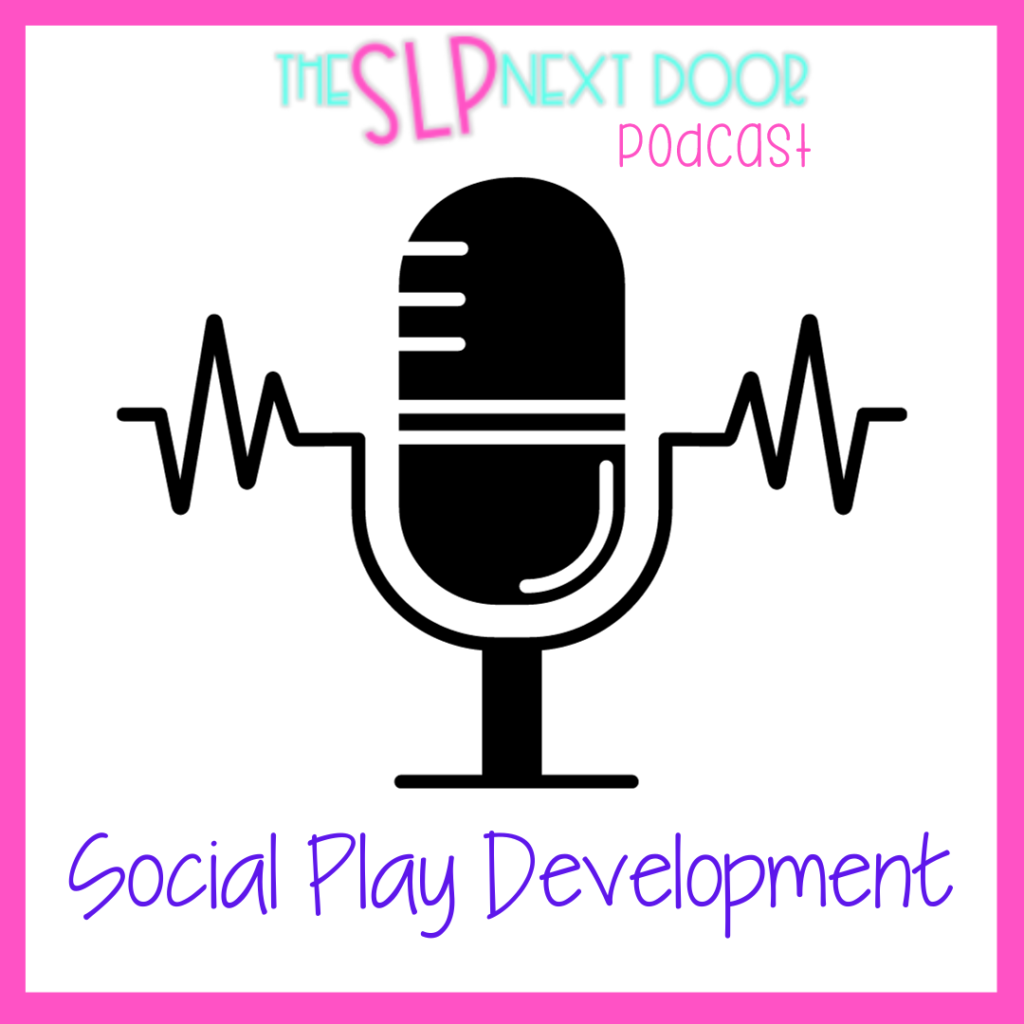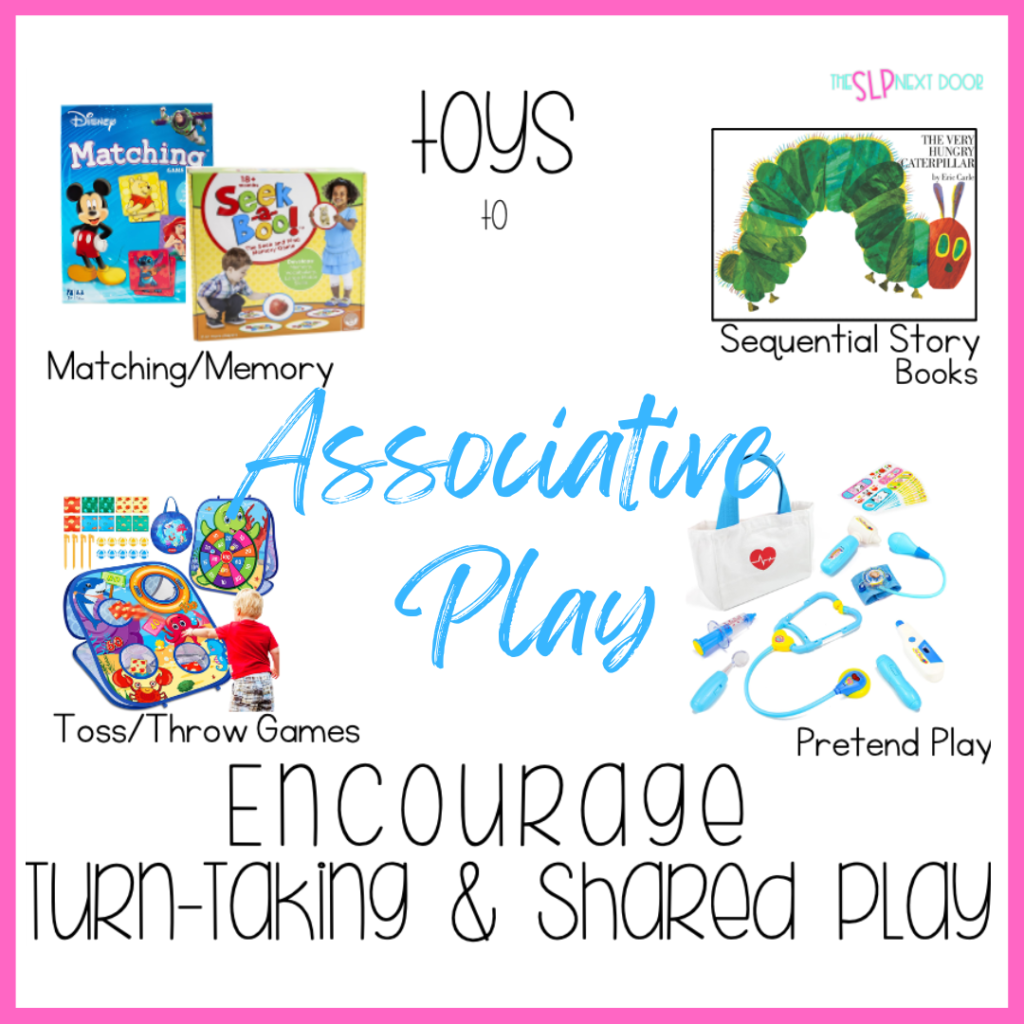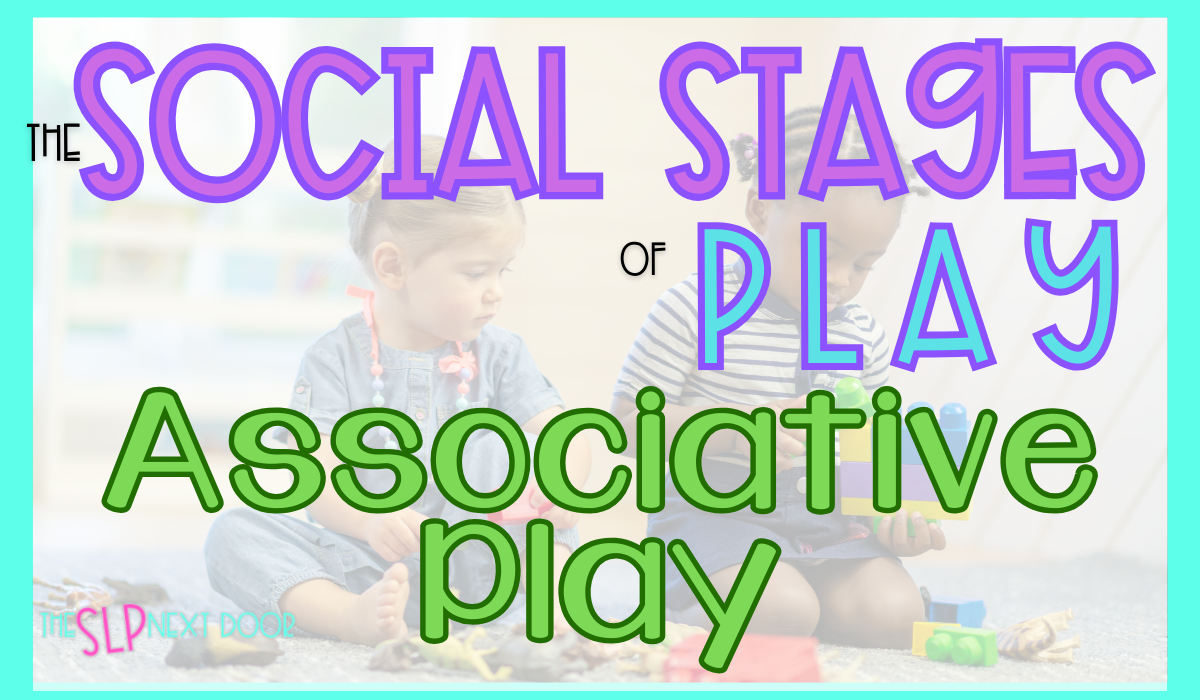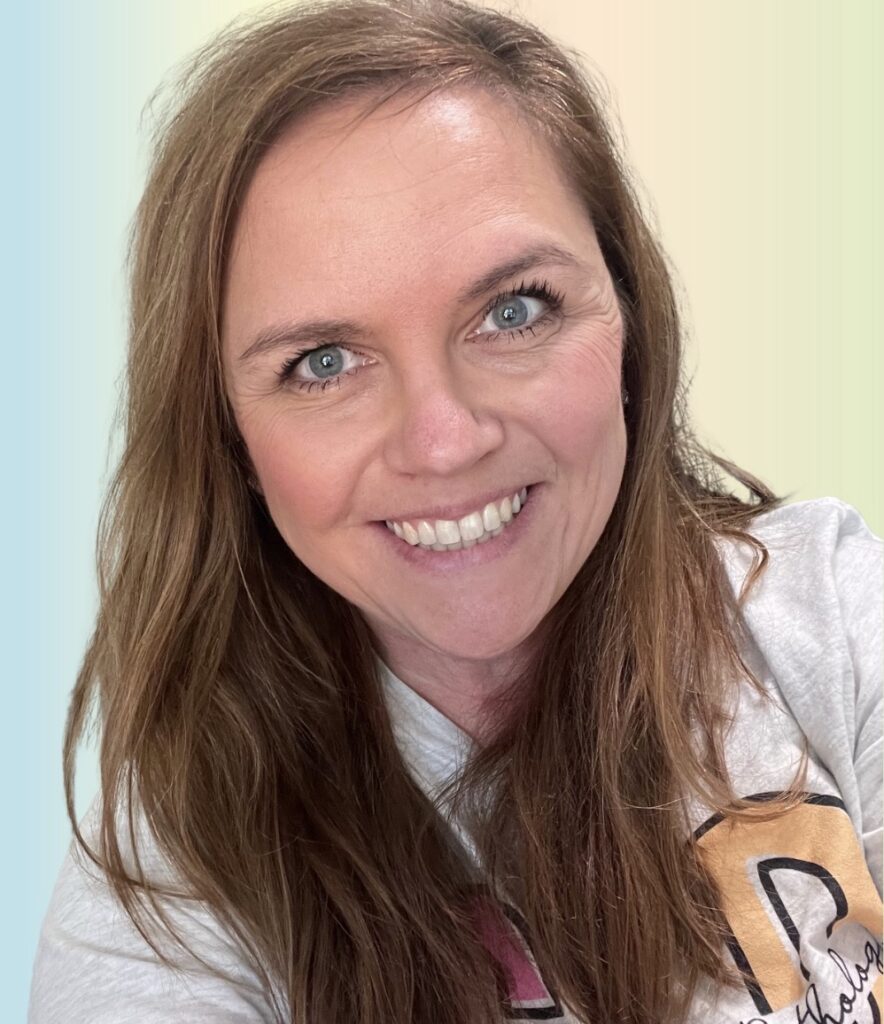Podcast: Play in new window | Download () | Embed
Join the Neighborhood RSS
In this series, we are talking about the different stages of play and their impact on a child’s language development. Here’s Stages 1&2 Unoccupied Play / Solitary Play, Stage 3 Spectator Play, Stage 4 Parallel Play, and in this post, we are going to talk about Stage 5 Associative Play!
*this post contains some affiliate links- if you purchase from the link, I earn a small commission*

What is Associative Play?
Associate play begins to emerge between 3 and 4 years. Interactions with others begin. In Associative Play, toddlers will participate in games or activities with others, and they begin to share toys. Child’s language development and play develop quite rapidly at this age. A lot of older toddlers and preschoolers are introduced to the concept of school through preschool programs or Mother’s Day Out programs. What’s happening at these programs? Early social skills development activities! Learning to share, turn-taking activities, activities to increase attention span for toddlers, and even how to be a friend!
Child’s Language Development
Between 3 and 4 years old, a child’s language development explodes. 3-4 year olds should have between 900-1000 words (in other words, a big vocabulary), they will be be active participants in simple conversations, enjoy their favorite shows, engage in pretend play, answer questions, ask (LOTS) of questions, and will begin to display their independence by wanting to do everything their way – if you know, you know- right?
Literacy development between 3-4 years old looks like this: some preschoolers may begin to recognize numbers and letters. Notice I said some not all. If your 3-4 year old doesn’t recognize their numbers and letters right away… it okay! Their attention span will also be increased for more reading time (and time for more print awareness exposure). 3-4 year olds also begin to understand the concept of rhyming; they enjoy rhyming songs and stories. Book ideas for this age group include: picture books with no words to increase language development, short story series like There was an Old Lady, Pete the Cat or The Couch Potato. Another concept to introduce is sequencing in stories like The Very Hungry Caterpillar, and The Gingerbread Man; rhyming books such as Sheep in a Jeep, and simple rhyming songs [I highly recommend super simple songs – i’m not an affiliate but I looove their music!]

Speech Therapy Activities for Preschoolers
When you’re considering toys and therapy sessions for this age group – think toys that encourage sharing and turn-taking and books simple storylines. Matching games, pretend play sets, and preschool board games are fun for this age group. Keep in mind, they’re learning the basics of playing, which provides so many opportunities for language and communication. Remember: these skills are emerging– meaning little ones aren’t going to follow rules right away and may not share right away. It’s up to us grown-ups (like with previous stages) to help guide them along and encourage those skills to develop.
Be sure to get the Developmental Stages of Play printable handout for parents! If you’re looking for more activities to promote language- check out the Early Language Learners Colors Activities for Speech Therapy! Promote generalization of language skills and opportunities for language development at across multiple printable activities all while learning colors!



2 Responses